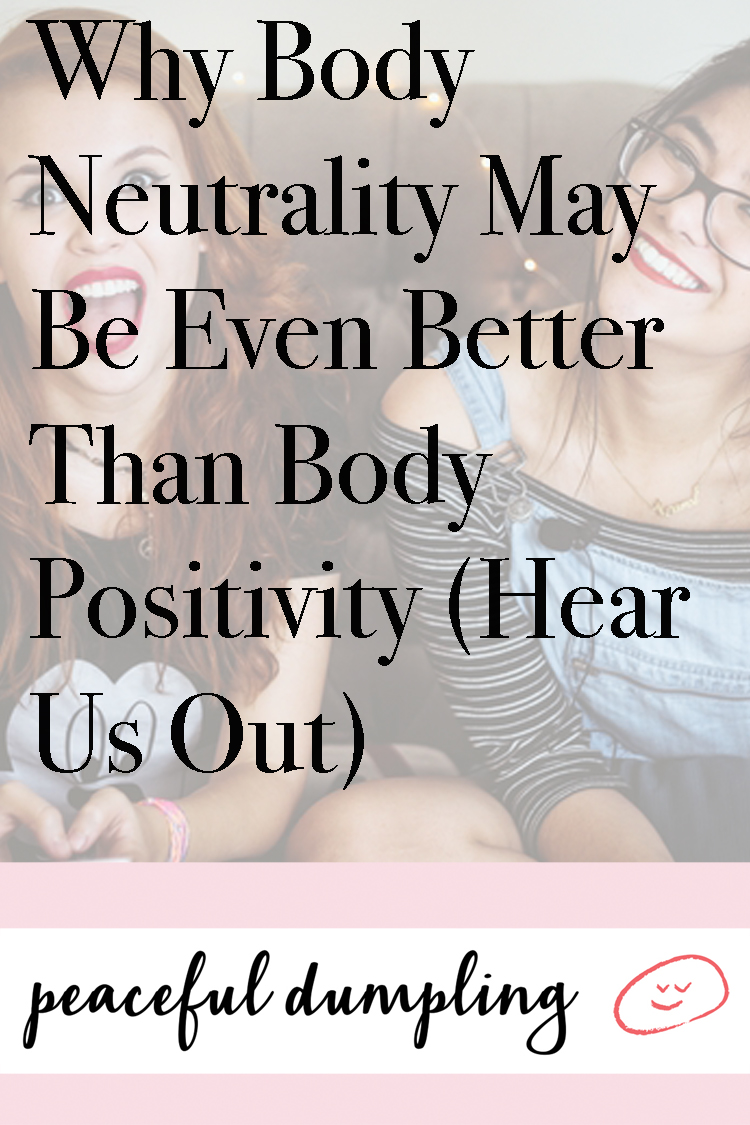The body positivity movement seems to be everywhere these days. From Instagram models who post long captions about self-love to major brands featuring women with curves and tattoos to dietitians talking about food in a whole new way, it’s clear that this movement is making waves. Although the concept of body positivity is getting a lot more attention these days (partially because of social media), the idea isn’t new. This movement has been around for decades, but as the times change and we learn more about self-esteem, mental health, and what it really means to have a healthy relationship with our bodies, it may be time to begin exploring the concept of “body neutrality” instead.

To understand how the body positivity movement caught on, we need to go back to its roots. While second wave feminists championed similar ideas throughout the 1960s and 70s, the official organization The Body Positive was formed in 1996. This organization was founded by Connie Sobczak and Elizabeth Scott after Connie lost her sister to an eating disorder. The two women were determined to fight back against a culture that promoted unrealistic standards for women and disordered patterns of eating. Instead, they wanted to create a culture where all bodies could be celebrated and self-love was encouraged. Thus, the body positivity movement that we know today began to take off.
It’s clear that in a society where many women (and men) are taught from a young age that they need to change their bodies to be accepted, a movement like this was desperately needed. The body positivity movement has sparked important conversations about how women’s bodies, in particular, are unfairly criticized, and how many women take up harmful behaviors in order to fit in, from eating too little to exercising too often. Makeup, fashion, and diet companies capitalized off peoples’ negative feelings about their own bodies, marketing the idea that if you simply changed a few things about your appearance, you would be happier—but there were always more things to change and more products to spend money on. Holidays and entire seasons just became excuses to sell more weight loss products—advertisers convinced people that they needed to work on their “summer bodies” and turn the New Year into an occasion to lose weight.
But now that the body positivity movement has grown in popularity, companies are doing a 180—many brands create ad campaigns all about self-love. However, the goal is still the same, and the message is similar—if you love yourself, you’ll buy these products! Sure, it’s an improvement, but it’s not exactly revolutionary.

Furthermore, we can’t all be 100% positive about our bodies all the time—and we don’t have to be. Let’s face it, even the most confident people out there have aspects of themselves that they might change. Furthermore, sometimes body positive messages still put a big emphasis on feeling beautiful—but our appearance doesn’t say anything about our character or moral standing anyway.
So, where does that leave us? How can we improve the way we talk about body positivity? Some activists are introducing a new concept: body neutrality, or body acceptance. The Green Mountain women’s organization coined this phrase because they felt that it conveyed a more realistic and attainable goal, and the idea is slowly gaining in popularity. Body neutrality isn’t about building perfect self-esteem, saying positive affirmations that you may not believe in, or maintaining unflinching confidence and self-love. Instead, the women behind this group encourage mindful forms of exercise like yoga and strength training, cooking nutritious, tasty meals that leave you feeling satisfied, and thinking back to where you picked up beliefs about how your body “should” look.

Body neutrality basically boils down to a few core concepts: moving in a way that you enjoy, eating foods that make you feel nourished, satiated, and energized (and, of course, treating yourself when the mood strikes), and appreciating your body for what it can do, not what it looks like. It’s unlikely that this is going to catch on with advertisers: after all, the message “You’re good enough the way you are” isn’t exactly going to persuade people to buy more products. And the message “Just stick with some basic healthy habits and go easy on yourself” isn’t a catchy marketing slogan. Our society can make it seem complicated, but the concept is fairly simple. We may not be able to love our bodies all the time, but if we can accept them and appreciate them, instead of punishing ourselves for not fitting a certain mold, we’ll be much better off.

What are your thoughts on body positivity vs. body neutrality?
Also by Jane: From Vegan Zapiekanka To Purple Sushi, Poland’s Vegan Scene Is Jaw-Dropping
Related: Still Struggle With Positive Body Image? 4 Surefire Ways To Make It Your Forever Mindset
How Getting Naked Changed My Body Image for the Better
Get more like this—Subscribe to our daily inspirational newsletter for exclusive content!
__
Photo: Pexels
